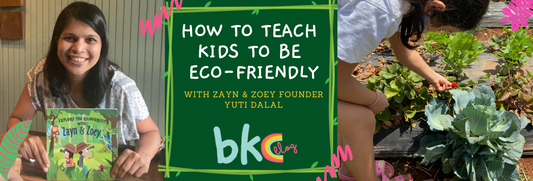
Does your child refuse to eat most of what you put on their plate? As a parent, you might feel defeated. You may even blame yourself for not being able to ensure proper nutrition. But it might come as a solace to hear that many parents face this struggle. A study from 2016 found that about 25% of children between the ages of 1.5 and 5 years are picky eaters.
While there is still a lot of ongoing research on the possible reasons why children can be difficult with food, one thing a number of experts agree on is that mealtime should not be a struggle. Dr. Dina Rose, PhD, a sociologist and author of It’s Not About the Broccoli, says the problem occurs when it becomes about control. It invites resistance from the child.
Instead, helping children become curious about their food and turning it into an exploration will teach them to have a healthier relationship with food as they grow into adults.
Here’s a list we’ve put down to help you reorient your child’s relationship with food:
1. Bring More Variety to the Table
Try to expose your child to a completely new type of food at least a couple of times a week, and get them excited about the fact they’re going to try something new that day. One tip that mom and YouTube blogger But First, Coffee swears by is: Offer them something you know they like, something you think they might like, and something you know they will probably not like (but you want to expose them to).
But every time you do present something that is alien to their palette, allow them the time to get accustomed to it. If they try even a little bit of it, it’s a victory! Don't force them to eat all of it, or else!
If your child is at the stage where they already view eating as a chore, then the sight of a plateful of one type of food might just push them over the edge. Instead, offer them small amounts of different types of food.
Your best friend when it comes to packing their school lunch is a bento box. Its neat little compartments make it super easy to pack small quantities of a variety of foods – for a healthy, balanced meal that includes some treats to bring a smile to your child’s face.
Key takeaway: Serve small portions with greater variety.
2. Treat All Food the Same
One common mistake that many parents make (because we were all brought up being told the same) is to insist on eating green leafy vegetables because they’re healthy.
Pitting one food type against the other creates space for a conflict. Not differentiating yummy food from healthy food will help avoid the latter seem like a task that one needs to be done with. On the other hand, it would be more productive to teach that all types of food bring something different to the table (quite literally!).
Banning one type of food, especially if it’s something unhealthy that they happen to love, will make them view the healthier stuff as their sworn enemy. Instead, serve the dessert along with the main course. Don’t leave it for the end as a ‘reward’ for finishing the ‘boring’ sabzi and dal. Place all of their options in front of them and let your child decide how they would like to eat their meal.
If your child does not like one item, try not to swap it with their favourite food. Encourage them to only try the food and express what they like or don’t like about it. If they refuse to eat it, keep exposing them to it in small amounts every now and then. A lot of the time, it’s just about helping them become familiar with something new.
Key takeaway: Avoid labelling food as ‘good’ versus ‘bad’.
3. Food Presentation Is Everything!
Are you dreading the word ‘NO’ everytime you’re serving your child their food? If they resist certain foods, try to offer it in different ways to make it interesting. After all, no one likes to eat the same preparation, even if it’s a dish they like, all the time!
Trying different ways of presenting the food will keep your child interested in what’s on their plate. Some of the things you could do to change things up would be to make a wrap or a sandwich, blend it into a smoothie or a soup, use it as toppings on a pizza, or roast the vegetables. Condiments like sauces or dips always come in handy.
Better yet, take a cue from your child. Ask them what they might like to do differently about a food they eat very frequently. If it’s convenient for you to pack sandwiches for your child’s tiffin, it might help to change it up sometimes. For instance, use these sandwich cutters and turn sandwich-making into a fun, creative activity with your child.
Do note that experts advise not to hide, disguise, or trick children into eating something they don’t want to, as that doesn’t really teach them to change their relationship with food.
Key takeaway: Be creative but not sneaky!
4. Try to Make Mealtime a Fun Activity
Another way to change things up for your child is to have mealtime in a different environment every now and then. For children who find it difficult to engage happily with their food, they may have negative associations with sitting at a dining table. Turning mealtime into a prison sentence will only have them running the other way.
Alternatively, it would help to change how they view mealtime if it was associated with activities they enjoy. Why not plan weekend meals that are themed around their favourite cartoon, movie, or book characters. They can play dress up, too! Or, organise the occasional picnic at home – spread a sheet on the living room floor, pack some food in a basket, and there you go!
Mom and YouTube blogger My Recipe also confesses to successfully trying games, especially when introducing her kids to new foods. She suggests rolling a dice – the number on the dice is the number of bites they have to take. Or, placing different food items on covered plates, and having everyone in the family pick a plate.
Key takeaway: Find ways to associate food with activities your child enjoys.
5. Teach Your Child About Food
The more your child learns about food – the making of it, where it comes from, etc. – the more invested they will be in it. So rather than keeping your child out of the kitchen, invite them in to help you with easy, safe, and age-appropriate tasks. Younger children can help with buttering a slice of bread, washing vegetables, setting the table, mixing a salad; older children can help with cutting softer foods, measuring ingredients, rolling rotis, and even planning meals.
Exposing them to simple tasks will help them appreciate the work that goes into making food. They may be more invested in eating food when they have put work into making it. Give them a say by involving them on your grocery runs, and allowing them to pick a certain number of items of their choice.

In the world of pre-packaged and processed food, children are increasingly alienated from the food-making process. Books like Usborne’s First Sticker Book Mealtime and Look Inside Food are handy resources to teach children as young as four about the food they’re putting into their bodies.
If you’re into gardening, consider planting some easy-to-grow herbs or vegetables with your child. Imagine their delight in nurturing a plant to life, then actually picking the herbs that they can use to garnish their meal!
Key takeaway: Make your child a key stakeholder in the food-making process.
6. Eat with Your Child
While it may be convenient to serve their meal separately, do try to eat with your child as much as possible. Seeing how you engage with your food, especially with the foods they don’t like, may help change how they perceive it.
Try this especially on the days you’re introducing a new food item or preparation. Children are naturally curious so when they see you eating and enjoying something they will most likely want to try it as well. Younger children, in particular, may want to taste it first from your plate – let them!
While young children are usually made to sit separately from the adults, eating with them will make them feel excited about being privy to something they’re usually not allowed to be a part of. They may also pick up table manners that they would otherwise not witness.
Key takeaway: Teach through action.
7. Limit the Snacking
Having scheduled mealtimes is not only easier for you as a parent but also good for the child. But what if your child is never hungry for their meals because they’ve been snacking all day?
There are a few things you can do. Scheduling snack times is one way to go. You can also set aside a snack drawer or a snack box with a selection of items in limited quantities. (Fruits are always a 'yes'!) You could also offer a small portion of something from their next meal.
You could also ask them why they feel like snacking. Is it because they are actually hungry or just out of boredom? (We do it as adults, too!) Helping them understand their body’s cues is crucial to building a healthy relationship with food.
Ultimately, there will be days when it will still be a complete nightmare, and that’s when you just have to cut yourself and your child some slack. Don’t label yourself a bad parent, and definitely don’t label your child a ‘fussy’, ‘picky’, or ‘difficult’ eater. (Psst…we only used these words to make it easier for you to find the article!)
Labels like these will only push your child on the defensive and definitely not encourage them to be more willing to try new foods. Those labels can follow your child into adulthood, and can take decades to shake off – I speak from experience.





